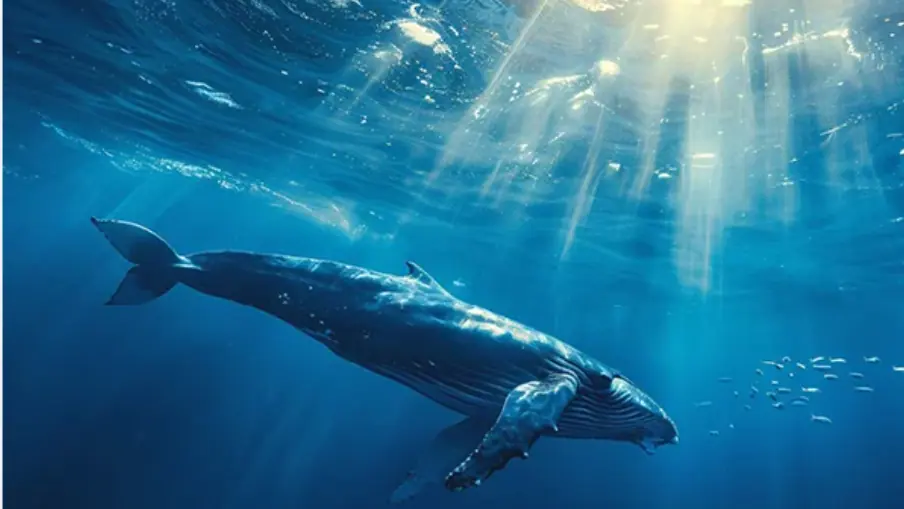The maritime industry’s push toward decarbonisation brings an unexpected benefit: the reduction of underwater radiated noise (URN). While the sector focuses intensively on emissions reduction and fuel efficiency, these same measures are quietly contributing to a healthier acoustic environment in our oceans. For ship owners and operators already investing in green technologies, addressing URN can be a natural extension of existing environmental initiatives, offering a dual benefit for both emissions and marine life.
Synergies between energy efficiency and noise reduction
One of the key insights from recent research is the natural alignment between energy efficiency measures and noise reduction. Most interventions aimed at improving a vessel’s fuel efficiency also contribute to reducing its URN output. Speed limitation, a fundamental tactic for lowering fuel consumption, simultaneously reduces propeller cavitation and, consequently, URN. Technologies like air lubrication systems, which reduce friction between a ship’s hull and the water, not only improve energy efficiency but also help in minimising noise pollution.
The IMO’s Energy Efficiency Existing Ship Index (EEXI), effective from January 2023, limits the power output of ship engines, indirectly contributing to URN reduction. More advanced technologies, such as wind-assisted propulsion and techniques to ensure Just-in Time Arrival, hold promise for further mitigating both emissions and noise pollution.
Understanding URN and its sources
Underwater radiated noise refers to the sound energy emitted from ships into the ocean. This noise originates from various sources, with cavitation from propellers being the most significant contributor. Cavitation occurs when water vapour bubbles form and collapse near the propeller blades due to pressure changes, releasing energy in the form of sound. This constant hum of cavitation and other machinery adds to the ambient noise in the ocean, contributing to a long-term increase in sound levels.
Since the 1930s, studies have indicated that URN levels have risen by an average of three decibels per decade, largely driven by shipping activities. This steady increase disrupts the natural acoustic environment, posing challenges for marine life that rely on sound for navigation, communication, and reproduction. While recent studies show some variation in trends across different regions, the overall impact of shipping on the underwater soundscape remains a cause for concern.
The environmental impact of URN on marine life
For marine species, especially those that depend on echolocation and sound-based communication, URN is akin to human exposure to constant noise pollution. The continuous noise can interfere with essential behaviours, such as hunting, mating, and social interaction, leading to a cascade of negative effects on marine ecosystems. Species like whales and dolphins are particularly vulnerable, as they rely on sound for long-distance communication and navigation. Coastal waters, where marine biodiversity is often concentrated, are especially sensitive to URN.
Regulatory bodies such as the International Maritime Organization (IMO) have begun addressing this issue. The IMO’s URN guidelines encourage stakeholders to adopt noise reduction measures, and national and regional measures are providing focused protection for particularly sensitive coastal areas, e.g. through mandatory or voluntary slow down zones.
The path to reducing URN
Achieving significant reductions in URN requires a multi-faceted approach. Beyond technological innovations, there is a need for stronger incentives. Ports and harbour authorities, as highlighted by the IMO, can play a crucial role in encouraging ship owners to adopt quieter technologies. The International Association of Ports and Harbors (IAPH) is already taking steps to include URN reduction in its Environmental Ship Index (ESI), rewarding vessels that minimise their environmental footprint.
Local initiatives, such as Vancouver’s proactive noise-reduction schemes, demonstrate the potential for regional action to address this global issue. Expanding these efforts to a broader scale, with the support of international bodies like the IMO, could create a framework for URN management across the maritime industry. Instruments such as Particularly Sensitive Sea Areas (PSSAs) offer a way to protect critical local habitats by imposing stricter controls in designated regions.
A sustainable maritime future
Looking ahead, the goal set by the Okeanos Foundation to reduce ambient deep ocean URN by three decibels per decade over the next 30 years is ambitious but achievable. Existing energy efficiency technologies, which also reduce noise, can help the industry meet these targets. The challenge lies in encouraging ship owners to choose the right technologies, scaling these solutions and ensuring that the incentives and guidance align with environmental objectives.
As the maritime industry continues its journey towards decarbonisation, addressing URN must remain a priority. The environmental and economic benefits of noise reduction are clear. By embracing energy-efficient practices which give the co-benefit of noise reduction, ship owners and operators can play a pivotal role in safeguarding the oceans for future generations. The conversation on URN has begun, but the real work lies ahead in transforming this awareness into action.
ICS and BIMCO’s commitment to reducing URN: A practical guide for the industry
Recognising the growing concerns around underwater radiated noise, the International Chamber of Shipping (ICS), in collaboration with BIMCO, has taken a proactive step by releasing the Underwater Radiated Noise Guide. This guide provides shipping companies with a comprehensive toolkit to address and mitigate noise pollution across their fleets. It details the primary sources of URN, emphasising the strong synergies between noise reduction and energy efficiency, offering opportunities for significant co-benefits. The guide outlines practical design and operational measures that are proven to reduce noise levels, helping companies develop and implement effective noise management plans.
For more information and to order the Underwater Radiated Noise Guide please visit: https://www.ics-shipping.org/publications/underwater-radiated-noise-guide-first-edition

About the contributor:
Chris Waddington is Technical Director at the International Chamber of Shipping (ICS).He is responsible for the development and implementation of International Chamber of Shipping policy on technical, operational and environmental regulatory risks affecting international shipping. He actively participates in IMO Committees and industry associations, to represent the interests of International Chamber of Shipping Members, shipowners and operators.












